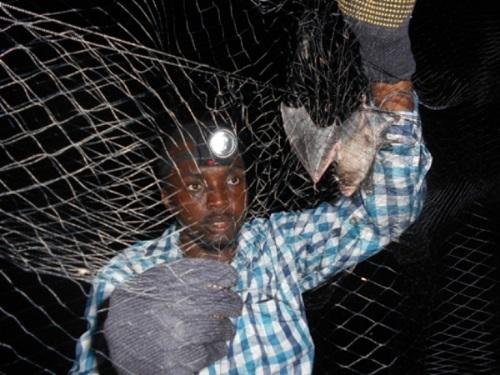Aaron Manga Mongombe
The project is aimed at providing up to date data of bat biodiversity on Mount Cameroon, in particular data on diversity, distribution and dietary preference.

Montane forest.
Mount Cameroon situated in the southwestern part of Cameroon is recognise worldwide as a biodiversity hotspot because of high levels of species richness and endemism. In spite of its status as a biodiversity hotspot, the mountain ecosystem has experienced great environmental degradation in recent decades, caused principally by anthropogenic factors such as over-hunting, bush burning and clearing of natural vegetation to make way for farmland. Most of the lowland montane forest has already been converted to farmland. The loss of habitat inevitably threatens the mountain fauna, including bats. Bats are rarely considered in conservation plans of Mount Cameroon rich biodiversity, despite their ecological importance. This situation is mainly due to lack of information on species diversity, distribution and abundance. Limited surveys of bats have been conducted on the Mount Cameroon before, but these surveys date back more than 30 years. Recent data on species diversity, distribution and abundance is required if any conservation plan is to be put in place for the protection of this species.

Extracting a bat from a mistnet.
Our project is aimed at providing up to date data of bat biodiversity on Mount Cameroon, in particular data on species diversity, distribution and dietary preferences across different elevational zone corresponding to different vegetation types. Also, it will help to create awareness among the local population on the importance of bats and the need to protect their roost.
The survey will involve capturing bats at 10 different sites on Mount Cameroon using standard mist net. The captured bat will be identified to species level using morphometric parameters. Roost sites in the study area will also be identified and mapped using a GPS. Faecal sample shall be collected from each captured bat by keeping it in a small bag for an hour. The faeces of insectivorous bats will be analysed in the laboratory in order to determine the types of insects consumed. Seeds found in faecal samples of frugivorous bats and pollen obtained by swapping the face, head or abdomen of nectivorous bats will be observed under a microscope, counted and identified by a plant taxonomist.
The project will provide a recent checklist of all species found on Mount Cameroon, hence contributing to the production of recent scientific information of bats on Mount Cameroon which is currently lacking. The data will provide the basis for the development of a proper long-term conservation strategy for this species.